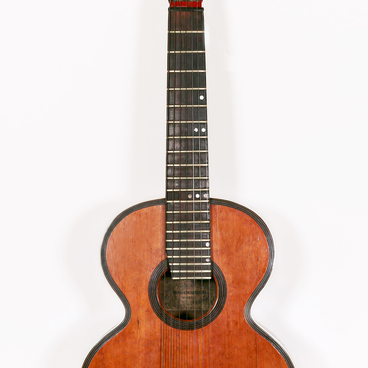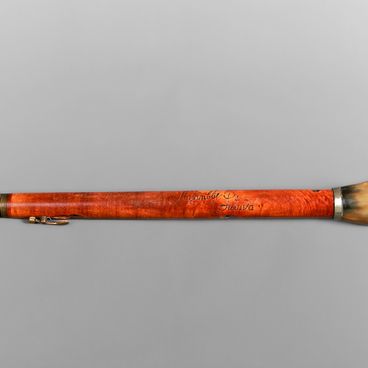The relia is one of the most unique exhibits of the Museum of Music. In Russia, it was also known as the “wheel lyre.” This string instrument was popular in Ukraine, Belarus, Russia, and many other European countries. It was known under various names. In France, it was called the “vielle, ” in Italy — the “ghironda, ” and in the United Kingdom — the “hurdy-gurdy.”
In medieval times, in the 12th and the 13th centuries, this instrument was known as the organistrum. Back then, the wheel lyre was a large instrument that could only be played by two people, one of whom had to turn the crank. Later, lighter portable instruments were developed. They were widely used by minstrels.
By the 15th century, the hurdy-gurdy tradition fell into a decline, and the instrument was mainly used by beggars and vagrants who sang their songs with some basic accompaniment. The instrument experienced a revival in the 18th century when it acquired tremendous popularity among the French nobility.
The shape of its deep wooden body reminds of the violin or the number 8. The sound board features a keybox. The instrument on display has ten keys. On one side, there is a wheel and a crank. When the wheel is turned, all three gut strings produce sounds.
The lyre has a buzzing and muddy sound. In Russia and Belarus, the wheel lyre was used by blind itinerant musicians and “kaliki, ” or nomadic beggars. They sang religious poems to the instrument’s sorrowful accompaniment, performing near churches and monastery walls, at fairs and markets.
The lyre was particularly popular in Ukraine. The so-called lirnyks not only used the instrument as an accompaniment to religious songs but also performed cheerful dances, and comic verses at weddings and other festivities.
In 19th-century Ukraine, there were even special lirnyk schools. After completing their studies, young musicians had to demonstrate their knowledge of repertoire and technical skills. After taking that examination, they were presented with a lyre and a license that allowed them to work on their own. Nowadays, the wheel lyre is sometimes used in folk ensembles and orchestras.
One of the last notable lyrniks was Kliment Shmatov from the Mishkovo village, Bryansk region. Some of his songs were written down by the ethnographer Klavdia Svitova at the Starodub House of Culture.
In medieval times, in the 12th and the 13th centuries, this instrument was known as the organistrum. Back then, the wheel lyre was a large instrument that could only be played by two people, one of whom had to turn the crank. Later, lighter portable instruments were developed. They were widely used by minstrels.
By the 15th century, the hurdy-gurdy tradition fell into a decline, and the instrument was mainly used by beggars and vagrants who sang their songs with some basic accompaniment. The instrument experienced a revival in the 18th century when it acquired tremendous popularity among the French nobility.
The shape of its deep wooden body reminds of the violin or the number 8. The sound board features a keybox. The instrument on display has ten keys. On one side, there is a wheel and a crank. When the wheel is turned, all three gut strings produce sounds.
The lyre has a buzzing and muddy sound. In Russia and Belarus, the wheel lyre was used by blind itinerant musicians and “kaliki, ” or nomadic beggars. They sang religious poems to the instrument’s sorrowful accompaniment, performing near churches and monastery walls, at fairs and markets.
The lyre was particularly popular in Ukraine. The so-called lirnyks not only used the instrument as an accompaniment to religious songs but also performed cheerful dances, and comic verses at weddings and other festivities.
In 19th-century Ukraine, there were even special lirnyk schools. After completing their studies, young musicians had to demonstrate their knowledge of repertoire and technical skills. After taking that examination, they were presented with a lyre and a license that allowed them to work on their own. Nowadays, the wheel lyre is sometimes used in folk ensembles and orchestras.
One of the last notable lyrniks was Kliment Shmatov from the Mishkovo village, Bryansk region. Some of his songs were written down by the ethnographer Klavdia Svitova at the Starodub House of Culture.








